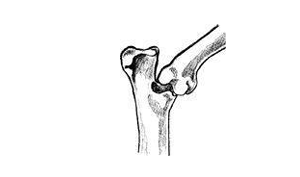NUTRITIONAL SECONDARY
HYPERPARATHYROIDISM
(PAPER BONE DISEASE)
Signs of this bone condition are seen most often in young, growing kittens, but the basic changes in metabolism and bone which occur are induced in any cat fed a diet unbalanced in calcium and phosphorus. The cause of this nutritional bone disease is usually a diet that consists solely or primarily of meat (muscle or organs such as heart, kidney, or liver).
This results in an abnormally low calcium intake and abnormally high phosphorus intake, and in turn stimulates the parathyroid glands to make metabolic adjustments in an attempt to return blood calcium and phosphorus to levels more nearly normal. Since insufficient dietary calcium is available to make the necessary adjustments, the skeleton is called upon to furnish it and demineralization of bone occurs.
Since the demand for calcium is particularly high in the first six to eight months of a cat’s life, signs of paper bone disease are usually most marked in animals of this age. Bowing of the legs, abnormal spinal curvature, and reluctance to move (a sign of pain) occur and have been misdiagnosed by some owners and veterinarians as rickets. Spontaneous fractures may even occur, and if the condition is left untreated death may be the final result. Nutritional secondary hyperparathyroidism can be very deceptive. Because meat is high in protein and fat, kittens fed improper high-meat or all-meat diets can maintain a healthy appearance in terms of body weight and normal hair coat while the bony changes are occurring.
Unless you have seen the disease before, you may have difficulty recognizing paper bone disease. Your veterinarian, however, should be able to diagnose it, and you will need veterinary expertise to treat it successfully. The best thing you can do as an owner is to prevent paper bone disease by feeding your cat (young or adult) a balanced diet.
